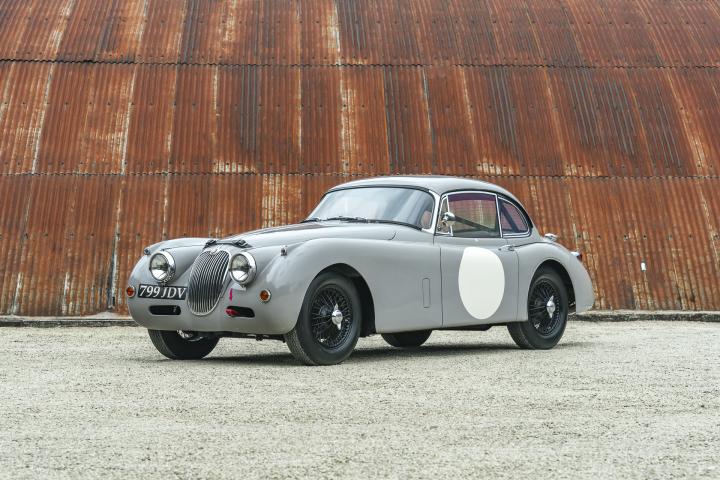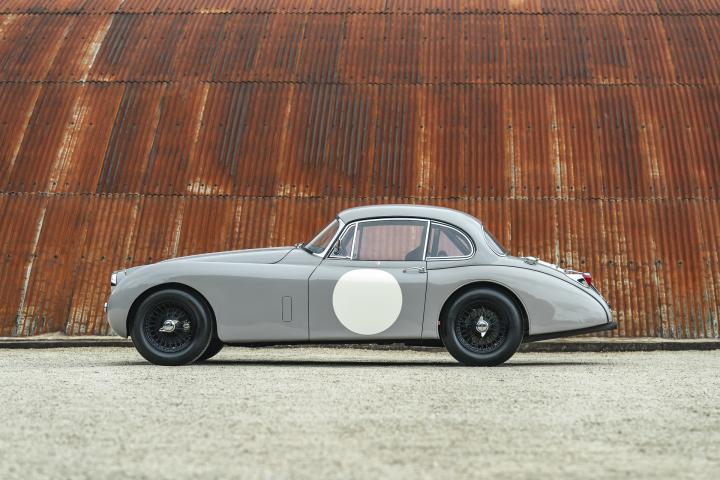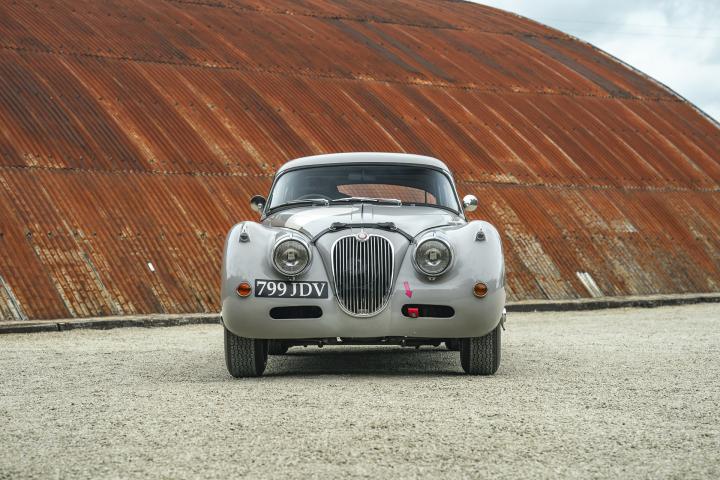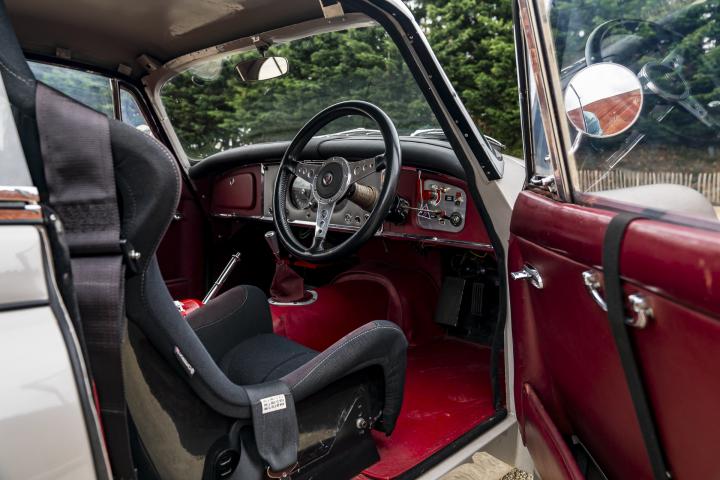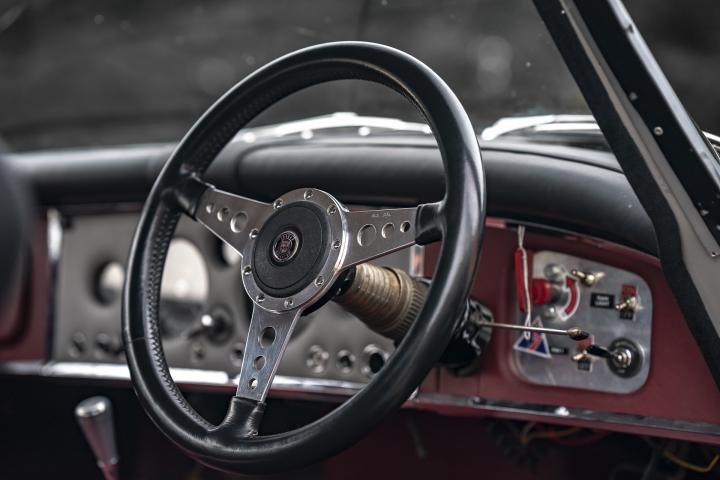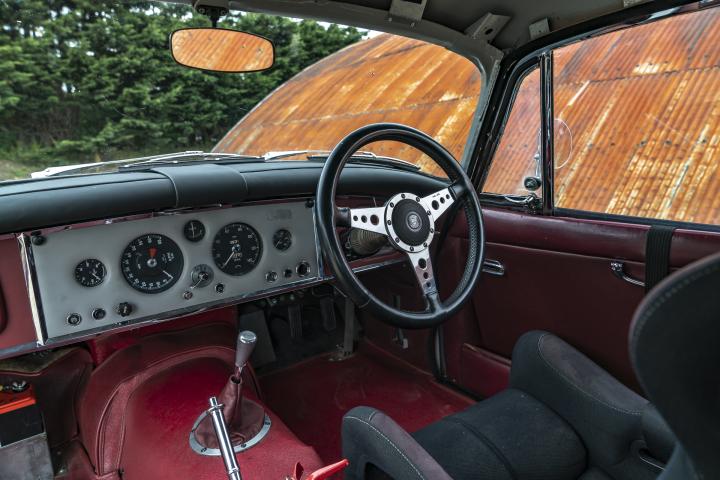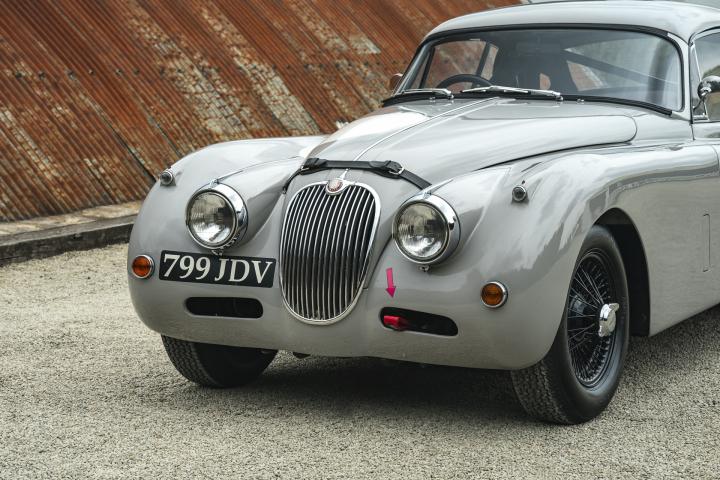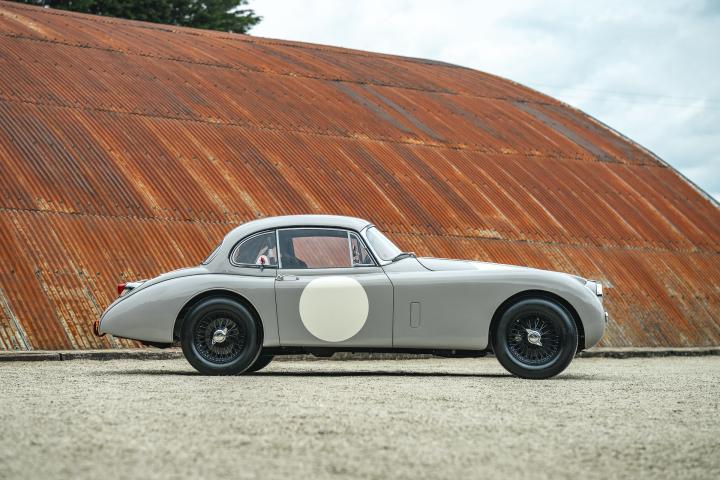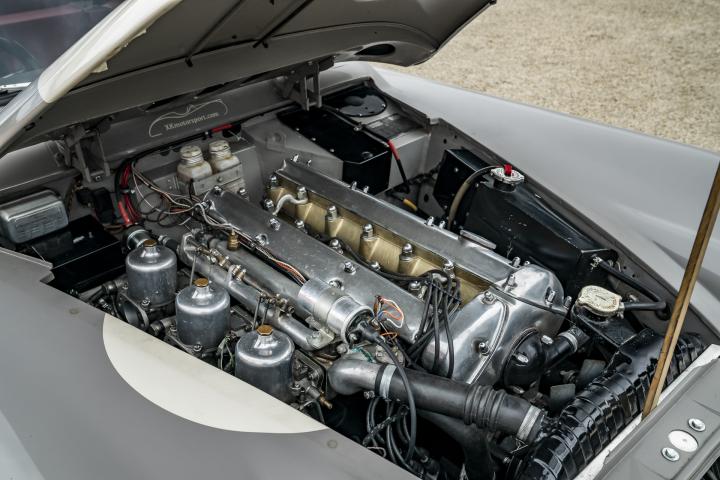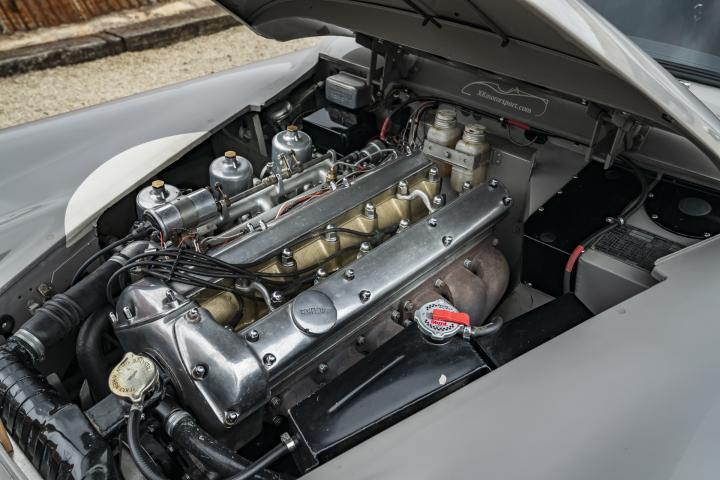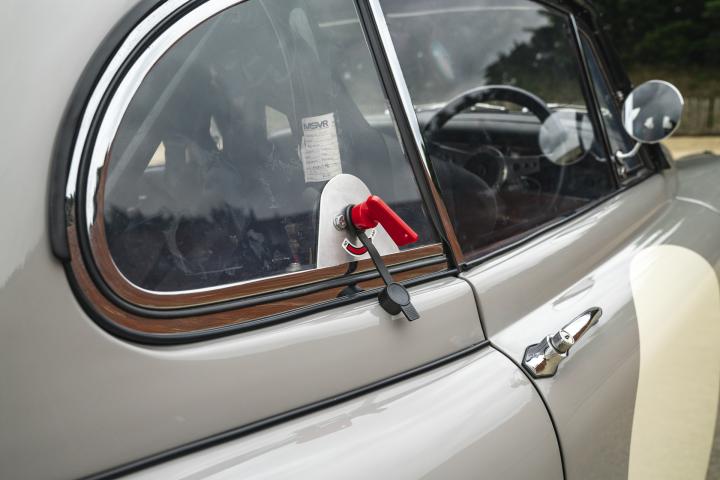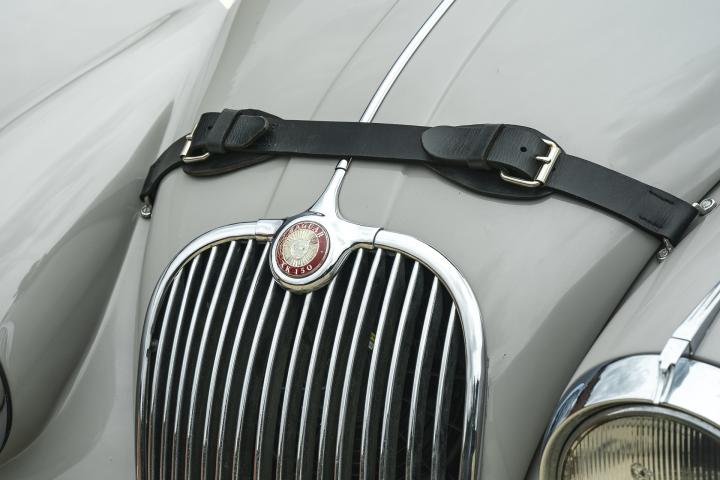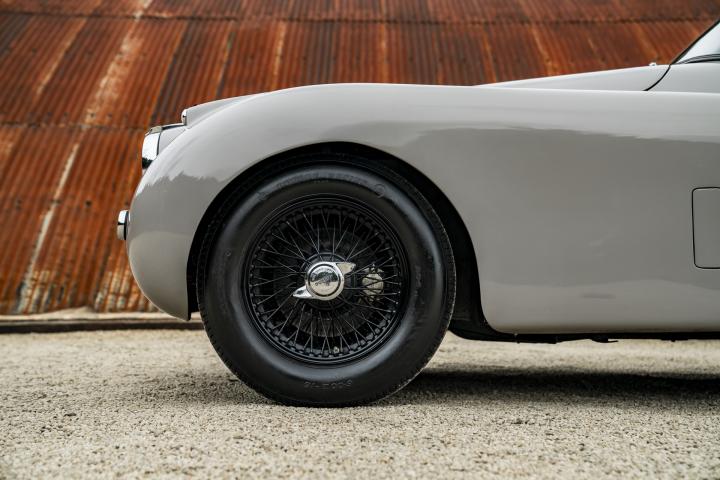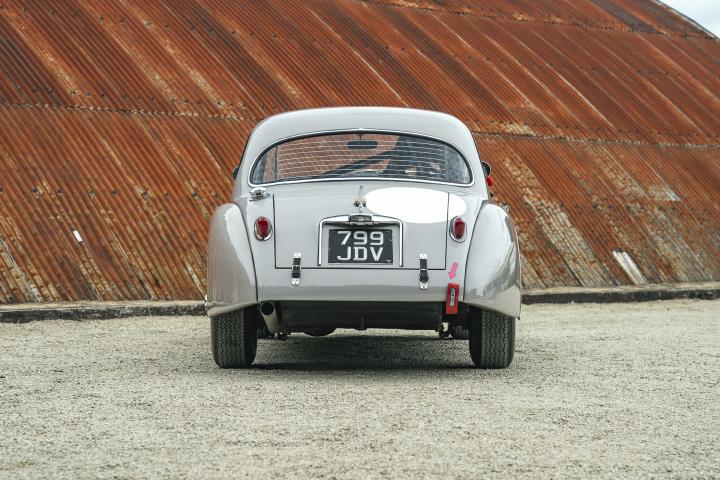1959 Jaguar XK150 S 3.8 FHC

|
Karosserie
|
Coupe
|

|
Übertragung
|
Manual
|

|
Außenfarbe
|
Grey
|

|
Polsterei
|
Cloth
|

|
Lenkung
|
Rhd
|
The Jaguar XK 150 is a versatile, competitive choice of historic racing car that’s eligible for a wide range of events, and this particular example was race-prepared in recent years with no expense spared.
It was originally built in February 1959 as a standard right-hand-drive, 3.4-litre, XK 150 S Fixed-Head Coupé. As one of only 86 such cars to leave the famous Browns Lane factory, that makes it a very rare variant of the model.
Chassis number 824785DN was finished in Pearl Grey with a Red interior and sold new via Glovers in Harrogate. Registered 799 JDV, the XK next turns up being offered for sale in March 1990, by which time it was said to have had only two owners – the second of whom had bought it in 1960 or 1961. They had also rebuilt the car between 1969 and 1973.
Fast-forward to 2016 and the XK 150 was once again in need of restoration, and over the course of the next two years, it was built up into competition spec by renowned specialist Brian Stevens of XK Motorsport. The engine was uprated from 3.4 to 3.8 litres, the larger capacity having been added to the XK 150 range from late 1959 onwards. It runs on S-spec triple SU carburettors and drives through the standard Moss four-speed gearbox.
Stevens had intended to use the completed XK 150 himself, but instead he decided to sell it in unraced condition. Through 2018 and 2019, it was campaigned by its new owner in the UK and on the continent, at venues such as Le Mans, Spa-Francorchamps, Brands Hatch and Snetterton.
Now being offered for sale at the Classic Motor Hub, this superbly prepared and well-proven XK 150 features a Corbeau race seat, Lifeline extinguisher, bolt-in half roll cage and Dunlop Racing tyres. It also has an FIA Historic Technical Passport that’s valid until December 2028, and will offer its next owner a highly competitive and enjoyable entry into a variety of historic-racing series.
Model history:
Introduced in 1957, the XK 150 was the last of the revered XK line that did so much to establish the Jaguar name around the world, and in many ways was a much more usable car than its 120 and 140 predecessors.
Its revised bodywork featured a straighter wing line, wider bonnet and shallower doors to give more room inside. There was also a one-piece windscreen, and the XK 150 pioneered the road use of the disc-brake system with which Jaguar had achieved so much competition success on the C-type and D-type.
It was offered in three body styles – the OTS (Roadster), the Drophead Coupé and the Fixed-Head Coupé. Beneath the bonnet was the 3.4-litre version of Jaguar’s twin-cam XK straight-six. This produced 190bhp in standard specification, but the SE model upped that to 210bhp. In top-of-the-range S specification, triple SU carburettors replaced the twin-carburettor set-up and – with a straight-port cylinder head and a compression ratio of 9:1 – helped to boost power to a claimed 250bhp.
When The Motor magazine tested an XK 150 3.4 S FHC, it recorded a top speed of 132mph, plus a 0-60mph time of 7.8 seconds. The Autocar, meanwhile, demonstrated the engine’s amazing flexibility by recording a 0-100mph time of 33.5 seconds using top gear alone. Such was its overall performance that the magazine stated: ‘After driving the 150 S for many miles, the driver realises that he is in a class apart from ordinary traffic.’
In 1959, Jaguar offered the option of a larger 3.8-litre straight-six, for which it claimed 265bhp in S specification – and it was this engine that would be carried over into the E-type when it replaced the XK 150 in 1961.
